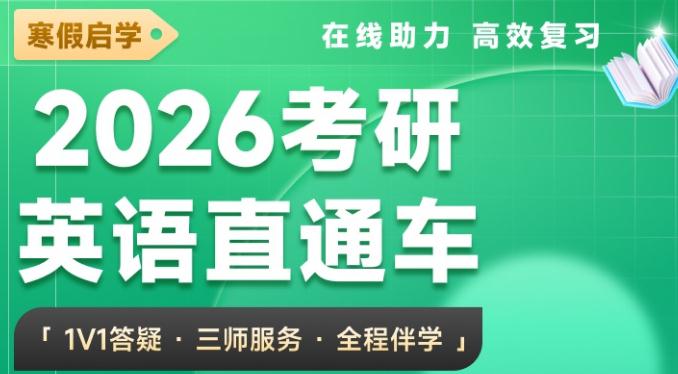1998-2022 ChinaKaoyan.com Network Studio. All Rights Reserved. 沪ICP备12018245号
北京理工大学物理学院研究生导师:刘贵斌
姓名:刘贵斌
所在学科:物理学院
职称:副高
联系电话:
E-mail:gbliu@bit.edu.cn
通信地址:北京市海淀区中关村南大街5号 100081
个人主页: http://www.qfmda.com/subweb/members/gbliu.html
个人简历
2000年9月-2004年7月,就读于中国科学技术大学天文与应用物理系,获得理学学士学位及计算机学士的双学位。
2004年9月-2010年7月,在中国科学院物理研究所从事凝聚态理论物理专业的学习与研究,获得理学博士学位。
工作经历
2010年1月-2010年3月,香港大学物理系,研究助理
2010年10月-2012年9月,香港大学物理系,博士后
2012年11月-2015年7月,北京理工大学物理学院,讲师
2015年7月-今,北京理工大学物理学院,副教授
科研方向
研究方向为凝聚态理论物理及计算物理。利用第一性原理计算、蒙特卡罗( Monte Carlo)等数值方法,结合紧束缚( TB)和k.p模型以及基于群论的对称性分析等解析方法来研究凝聚态物质的电、光、自旋、能谷、及拓扑相关的新奇物性。目前的研究内容包括低维凝聚态体系的电子结构和物性,以及光子晶体及超材料中的拓扑现象。
学术成就
近年来在层状材料过渡金属二硫属化物(TMD)的电子结构、理论模型及其物性方面取得了一系列的研究成果。具有代表性的研究成果包括:(1) 基于群论的对称性分析提出了一个描述TMD单层的三带TB模型,该模型能够有效的描述该类体系的低能电子结构,被国内外同行广泛认可及使用,引用率达200次以上 [PRB 88, 085433 (2013)]。(2) 提出了一个双层TMD在±K谷处的低能有效k.p模型,可描述双层TMD中自旋、谷以及层三个自由度间的耦合并基于此研究了谷控的磁电耦合效应;此外还预言了双层TMD在±K谷具有自旋依赖的圆极化光选择定则以及空穴输运的自旋霍尔效应。该工作已被引用100次以上 [Nat Comm 4, 2053 (2013)]。(3) 为探究在实际应用中有限体系里谷自由度是否依然有效,研究了量子点限制势在单层TMD中引起的谷间耦合,两种不同的理论方法一致表明在小至几十纳米的TMD单层量子点中谷间耦合依然是很小的,谷依然是有效的自由度,为TMD单层在谷电子学的器件应用上扫除了理论上的重大顾虑。该工作已被引用20次以上 [New J Phys 16, 105011 (2014)]。(4) 从能带特征、对称性、激子效应、自旋轨道耦合效应、能谷依赖的特性以及与Berry相位相关的物理属性等多个方面对单层及双层TMD的电子结构进行了综述与评论;此外, 还总结和比较了当时各种近似下描述二维TMD的理论模型并对它们各自的特点及适用范围进行了深入的分析与评论。 该工作对深入理解TMD层状材料的电子结构及相关物性有着重要的理论参考价值,已被引用100次以上 [Chem Soc Rev 44, 2643 (2015)]。除上述研究成果以外,在TMD层状材料方面还有一系列合作研究的工作,其中最具影响力的当数2012年关于TMD单层的研究,该研究中我们开创性的研究了TMD单层中谷与自旋耦合的丰富物理内容,包括谷依赖的Berry曲率和轨道磁矩、谷依赖的圆极化光选择定则、谷霍尔效应以及自旋霍尔效应等,奠定了TMD材料在谷电子学中的重要地位,该工作已被引用1300以上 [PRL 108, 196802 (2012)]。
最新学术成果及引用情况可参见:
(1) ResearcherID http://www.researcherid.com/rid/A-2724-2009
(2) 谷歌学术 https://scholar.google.com/citations?user=qbI2lYgAAAAJ&hl=en
论文列表如下:
29. Maoyuan Wang, Gui-Bin Liu∗, Hong Guo, and Yugui Yao∗, An efficient method for hybrid density functional calculation with spinorbit coupling, Computer Phys. Commun. 224, 90 (2018).
28. Pei Yang, Li-Jie Shi, Jian-Min Zhang, Gui-Bin Liu, Shengyuan A Yang, Wei Guo, and Yugui Yao, Tuning to the band gap by complex defects engineering: insights from hybrid functional calculations in CuInS2, J. Phys. D 51,025105 (2018).
27. Yong Wang, Zhan Wang, Wang Yao, Gui-Bin Liu∗, and Hongyi Yu∗, Interlayer coupling in commensurate and incommensurate bilayer structures of transition-metal dichalcogenides, Phys. Rev. B 95, 115429 (2017).
26. Shan Guan, Zhi-Ming Yu, Ying Liu, Gui-Bin Liu, Liang Dong, Yunhao Lu, Yugui Yao, and Shengyuan A. Yang, Artificial gravity field, astrophysical analogues, and topological phase transitions in strained topological semimetals, npj Quantum Materials 2, 23 (2017).
25. Hongyi Yu, Gui-Bin Liu, Jianju Tang, Xiaodong Xu, and Wang Yao, Moire excitons: From programmable quantum emitter s to spin-orbit-coupled artificial lattices, Science Advances 3, e1701696 (2017).
24. Wanxiang Feng, Cheng-Cheng Liu, Gui-Bin Liu, Jin-Jian Zhou, and Yugui Yao, First-principles investigations on the Berry phase effect in spin-orbit coupling materials, Comput. Mater. Sci. 112, 428 (2016).
23. Yue Wu, Qingjun Tong, Gui-Bin Liu, Hongyi Yu, and Wang Yao, Spin-valley qubit in nanostructures of monolayer semiconductors: Optical control and hyperfine interaction, Phys. Rev. B 93, 045313 (2016).
22. Zefei Wu★, Shuigang Xu★, Huanhuan Lu★, Armin Khamoshi★, Gui-Bin Liu★, Tianyi Han, Yingying Wu, Jiangxiazi Lin, Gen Long, Yuheng He, Yuan Cai, Yugui Yao, Fan Zhang, and Ning Wang, Even-odd layer-dependent magnetotransport of high-mobility Q-valley electrons in transition metal disulfides, Nature Commun. 7, 12955 (2016). (★ These authors contributed equally to this work.)
21. Hongjun Liu, Jinglei Chen, Hongyi Yu, Fang Yang, Lu Jiao, Gui-Bin Liu, Wingking Ho, Chunlei Gao, Jinfeng Jia, Wang Yao, and Maohai Xie, Observation of intervalley quantum interference in epitaxial monolayer tungsten diselenide, Nature Commun. 6, 8180 (2015).
20. Gui-Bin Liu, Di Xiao, Yugui Yao, Xiaodong Xu, and Wang Yao, Electronic structures and theoretical modelling of two-dimensional group-VIB transition metal dichalcogenides, Chem. Soc. Rev. 44, 2643 (2015).
19. Jin-Jian Zhou, Wanxiang Feng, Gui-Bin Liu, and Yugui Yao, Topological edge states in singleand multi-layer Bi4Br4, New J. Phys. 17, 015004 (2015).
18. Hongyi Yu, Yue Wu, Gui-Bin Liu, Xiaodong Xu, and Wang Yao, Nonlinear Valley and Spin Currents from Fermi Pocket Anisotropy in 2D Crystals, Phys. Rev. Lett 113, 156603 (2014).
17. Gui-Bin Liu,Hongliang Pang, Yugui Yao, and Wang Yao, Intervalley coupling by quantum dot confinement potentials in monolayer transition metal dichalcogenides, New J. Phys 16, 105011 (2014).
16. Hongyi Yu, Gui-Bin Liu, Pu Gong, Xiaodong Xu, and Wang Yao, Dirac cones and Dirac saddle points of bright excitons in monolayer transition metal dichalcogenides, Nature Commun. 5, 3876 (2014).
15. Rui-Lin Chu, Gui-Bin Liu, Wang Yao, Xiaodong Xu, Di Xiao, and Chuanwei Zhang, Spinorbit-coupled quantum wires and Majorana fermions on zigzag edges of monolayer transition-metal dichalcogenides, Phys. Rev. B 89, 155317 (2014).
14. Jian-Min Zhang, Wenmei Ming, Zhigao Huang, Gui-Bin Liu, Xufeng Kou, Yabin Fan, Kang L. Wang, and Yugui Yao, Stability, electronic, and magnetic properties of the magnetically doped topological insulators Bi2Se3, Bi2Te3, and Sb2Te3, Phys. Rev. B 88, 235131 (2013).
13. Gui-Bin Liu, Wen-Yu Shan, Yugui Yao, Wang Yao, and Di Xiao, Three-band tight-binding model for monolayers of group-VIB transition metal dichalcogenides, Phys. Rev. B 88, 085433 (2013).
12. Hualing Zeng, Gui-Bin Liu, Junfeng Dai, Yajun Yan, Bairen Zhu, Ruicong He, Lu Xie, Shijie Xu, Xianhui Chen, Wang Yao, and Xiaodong Cui, Optical signature of symmetry variations and spin-valley coupling in atomically thin tungsten dichalcogenides, Scientific Reports 3, 1608 (2013).
11. Sanfeng Wu, Jason S. Ross, Gui-Bin Liu, Grant Aivazian, Aaron Jones, Zaiyao Fei, Wenguang Zhu, Di Xiao, Wang Yao, David Cobden, and Xiaodong Xu, Electrical tuning of valley magnetic moment through symmetry control in bilayer MoS2, Nature Phys. 9, 149 (2013).
10. Zhirui Gong★, Gui-Bin Liu★, Hongyi Yu, Di Xiao, Xiaodong Cui, Xiaodong Xu, and Wang Yao, Magnetoelectric effects and valley-controlled spin quantum gates in transition metal dichalcogenide bilayers, Nature Commun. 4, 2053 (2013). (★ These two authors contribute equally.)
9. Di Xiao, Gui-Bin Liu, Wanxiang Feng, Xiaodong Xu, and Wang Yao, Coupled Spin and Valley Physics in Monolayers of MoS2 and Other Group-VI Dichalcogenides, Phys. Rev. Lett. 108, 196802 (2012).
8. Kai-Cheng Zhang, Yong-Feng Li, Gui-Bin Liu, and Yan Zhu, Spin glass transition in canonical AuFe alloys: A numerical study, Phys. Lett. A 376, 1898 (2012).
7. Kai-Cheng Zhang, Gui-Bin Liu and Yan Zhu, Chiral-glass transition in a diluted dipolar-interaction Heisenberg system, Phys. Lett. A 375, 2041 (2011).
6. Gui-Bin Liu and Bang-Gui Liu, Dynamical Monte Carlo investigation of spin reversal and nonequilibrium magnetization of single-molecule magnets, Phys. Rev. B 82, 134410 (2010).
5. Gui-Bin Liu and Bang-Gui Liu, Nonequilibrium ferromagnetism of interacting Single-Molecular Magnets, Appl. Phys. Lett. 95, 183110 (2009).
4. Gui-Bin Liu and Bang-Gui Liu, A Green’s function model for ferromagnetism and spin excitations of (Ga,Mn)As diluted magnetic semiconductors, Chin. Phys. B 18, 5047 (2009).
3. Yong-Feng Li, Gui-Bin Liu, Li-Jie Shi and Bang-Gui Liu, Fe-Vacancy-Induced Ferromagnetism in Tetragonal FeSe Thin Films, Chin. Phys. Lett 26, 127505 (2009).
2. Gui-Bin Liu and Bang-Gui Liu, Temperature-dependent striped antiferromagnetism of LaFeAsO in a Green’s function approach, J. Phys.: Condens. Matter 21, 195701 (2009).
1. Gui-Bin Liu and Bang-Gui Liu, Domain structures of ultrathin magnetic nanobelts, Phys. Lett. A 372, 3857 (2008).2. Gui-Bin Liu and Bang-Gui Liu, Temperature-dependent striped antiferromagnetism of LaFeAsO in a Green’s function approach, J. Phys.: Condens. Matter 21, 195701 (2009).
来源未注明“中国考研网\考研信息网”的资讯、文章等均为转载,本网站转载出于传递更多信息之目的,并不意味着赞同其观点或证实其内容的真实性,如涉及版权问题,请联系本站管理员予以更改或删除。如其他媒体、网站或个人从本网站下载使用,必须保留本网站注明的"稿件来源",并自负版权等法律责任。
来源注明“中国考研网”的文章,若需转载请联系管理员获得相应许可。
联系方式:chinakaoyankefu@163.com
- 2026考研英语全程班 6班
- 权威高配师资亲授技巧,教研千锤百炼科学提分。直录播课相结合精讲互动二合一,专业团队精细化作文批改。讲练结合,随学随练稳步提升。支持试听~
- 主讲团队:王江涛、谭剑波、董仲蠡、许聪杰、陈志超、潘赟、郑艳彤、易熙人

扫码关注
了解考研最新消息












